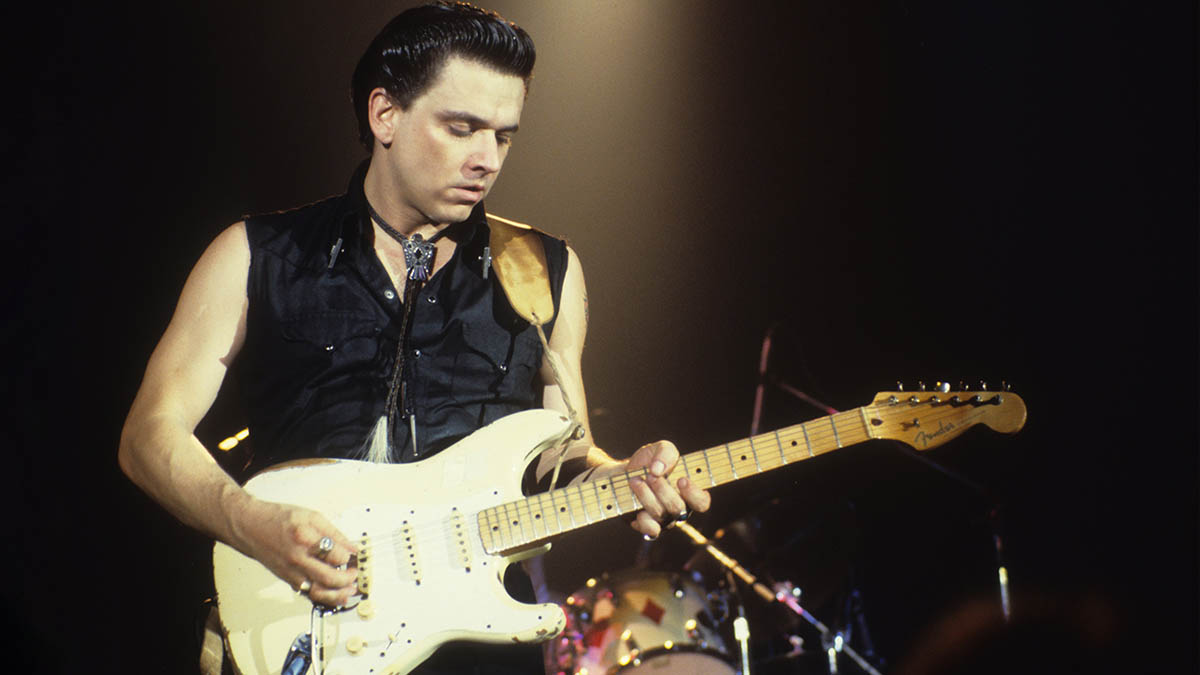
Jimmie Vaughan is a true blues guitar legend. With over 40 years of touring experience and a plethora of albums to his name, Jimmie’s sound has served to be a foundational source of inspiration for those in the know. Jimmie is of course the older brother of the late and great Stevie Ray Vaughan, and is perhaps unfairly overshadowed by his older brother’s success.
Despite this, Jimmie has paved his own way and defined his own sound and approach while keeping the rich heritage of the blues alive throughout his career.
Like most rock and roll legends of old, he started out playing in bands with friends in high school, first performing at just the age of 14 in 1965. In his late teens when he was just 19, he had the opportunity to open for The Jimi Hendrix Experience when the band played in Texas during 1968.
Jimmie went on to form The Fabulous Thunderbirds, releasing four studio albums between 1979 and 1983. Despite being considered as some of the most important albums for that era, they didn’t succeed commercially and Jimmie found himself without a record deal for a number of years. It was during this time that his younger brother Stevie would achieve commercial fame and success, when David Bowie recruited him on his album, Let’s Dance.
Eventually, the Thunderbirds gained a new record deal in the early ’80s, but in the early ’90s Jimmie left the band to pursue a solo career. It was at this point that he recorded the legendary The Vaughan Brothers record, just before Stevie was tragically killed in a helicopter crash.
Vaughan went on to record numerous albums and tour over the next two decades, releasing his most recent album in 2019. Jimmie describes this album as his personal greatest achievement, finally arriving ‘home’ with his own voice and style in one of the most challenging genres in which to sound unique and distinctive.
He won a number of Grammy awards in the 1990s for his co-effort with Stevie on The Vaughan Brothers, winning Best Contemporary Album and Rock Instrumental Performance, and in 2001 winning Best Traditional Blues Album for his record, Do You Get The Blues?.
Jimmie has always kept a traditional and authentic voice within the blues, and our two studies this month focus on the sound of much of his early blues-rock playing.
Get the tone
Amp Settings: Gain 5, Bass 6, Middle 4, Treble 7, Reverb 6
Jimmie plays Fender Stratocasters and has had a signature Tex-Mex Strat with Fender since 1997. His tone is clear and crisp for the most part, so a clean amplifier tone just before the edge of break-up is ideal. If you have a modeler, try a Fender Twin or similar. For his overdriven sound, a Tube Screamer clone will work best. Add light reverb and you’re done!
Study 1. Traditional major blues
This study focuses on Jimmie’s traditional blues phrasing with mostly major pentatonic inspired ideas and a clean, direct guitar tone. Give the notes plenty of oomph from the picking hand to get the ideas to project.
Study 2. Mixing Dorian and minor pentatonic
This study is a great example of Jimmie’s use of the Dorian tonality within his minor pentatonic licks. Make note of how the phrasing and lines don’t sound like scale practice, and how the bonus major 6th note on the 7th fret of the second string is sparingly used to create that splash of colour at the key moment.







